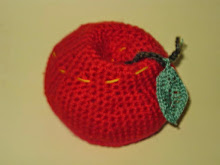
These diagrams are all self evident and self explanatory. They show the harmonious relationships of numbers in the world around us.
Click on picture to enlarge; click again to enlarge further. Go to arrow "back" to return.
The Fibonacci christmas tree idea, posted December 2010, came from a woodworking project at the local Craft Workshop and Gallery where I have often volunteered. Young Alex and I worked together to make a wooden tree. We made a design, measuring by eye, lengths that were pleasing, and we used what we had available in timber and dowelling. It looked like a series of triangles. I wondered later if the Fibonacci series of numbers would fit in. It turned out the numbers fit exactly as the above diagram shows. Take a triangle and make a cone; it becomes 3 dimensional. The cone can go on forever with the relative dimensions as above. One can even double or triple etc the width or height etc so long as ratios remain same. 

or = Pi times diameter, where r or d can be a fibonacci number.
Being old-fashioned I like to use Pi = 22/7; the modern value is 3.14159
This is Archimedes' Constant, and one can search the Internet for history. I remember seeing small grove of Hoop Pines growing in the Cumberland State Forest Nursery at Pennant Hills, back in the 1980s. It was shady inside, with soft pine needles underfoot, and not a single weed. Outside the little forest it was brilliantly sunny and weeds were like a jungle.
I remember seeing small grove of Hoop Pines growing in the Cumberland State Forest Nursery at Pennant Hills, back in the 1980s. It was shady inside, with soft pine needles underfoot, and not a single weed. Outside the little forest it was brilliantly sunny and weeds were like a jungle.
 I remember seeing small grove of Hoop Pines growing in the Cumberland State Forest Nursery at Pennant Hills, back in the 1980s. It was shady inside, with soft pine needles underfoot, and not a single weed. Outside the little forest it was brilliantly sunny and weeds were like a jungle.
I remember seeing small grove of Hoop Pines growing in the Cumberland State Forest Nursery at Pennant Hills, back in the 1980s. It was shady inside, with soft pine needles underfoot, and not a single weed. Outside the little forest it was brilliantly sunny and weeds were like a jungle.Forests mean a lot to me. My earliest memory is of getting lost in a pine forest in Germany. My parents eventually found me. I was 3.
I am concerned at the wholesale destruction of forests worldwide, and even in Australia. We lose the intricate ecology; the understorey is valuable too. Some small trees in Tasmania have the best wood for making musical instruments. Pulping trees is a terrible waste, especially so because the Indian Hemp was maligned mostly by big business in the 1930s demonising the plant because it threatened their easy profits. I am grateful for Doug Yurchey who has written a most lucid article in http://www.world-mysteries.com/
We need to grow mixed forests again. Mother Nature needs us to do this.
I greatly admired Damien Lynch who began August Ethical Investments in the 1980s. He began EcoForests 2001. 93 hectares of mixed species of valuable timber native Australian trees were planted at Mill Creek near Stroud in the Hunter Valley, NSW. I looked it up on the Internet as I was writing this section. "Green is good, but hardly invincible". This is what I was saddened to find. Ecoforests went into liquidation in 2005, squeezed out by MIS. 120 investors lost 2/3 of a million dollars. NSW Forestry was subsidised by Govt to the tune of $14 million in 2007-2008. The wood is sold at $10 a ton. Private growers get $35 - $60 a ton. Plus we know that monoculture forests requires much pesticide; as any unhappy neighbouring farmer in Tasmania and elsewhere knows. Oh dear. We should know by now that the right thing should be done. It is a pity that heroes like Damien are failed by our society.
There is more.
30,000 hectares of native forest in the Tiwi Islands have been planted with an Acacia which has the potential to become a weed. Even these huge projects are bankrupt. Plantations of African Mahogany and Asian Teak being grown in the Kimberleys will be a terrible pest. I as a longtime bush regenerator see this with dismay.
For me, the only true Apology is to return the Land to its rightful pristine condition, with its own rich ecology. Maybe this is an impossible dream, but dream we must, if we want to have any kind of meaningful future.
I did find a great website, in Queensland in Ravensthorp...I think it is, Toowoomba way, they grow mature Hoop Pines in fields. Also Tuckeroo and Blueberry Ash and many more. A gigantic machine takes out a big root ball for transplanting the tree. I need to write more on this asap.


Thanks for the clarification :simple & effective
ReplyDeleteThank you, Barka. I wish I had used black ink for diagrams and tables - would be easier to read.
ReplyDelete